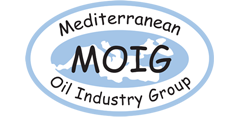
06 April 2022, the MOIG Director participated; via electronic conferencing platform; to Tiered Preparedness and Response (TPR) Series Webinar titled In-Situ Controlled Burning; organized by Oil Spill Response Limited (OSRL); technical partner.
The webinar was presented by Tristan Barston; Senior Consultant OSRL from Houston Technical Office.
Tristan Barston started by explaining the TPR Capabilities highlighting that there are 15 recognized capabilities which essentially represent the scope of Tiered Preparedness and Response. He noted that each capability is underpinned by a robust Incident Management System (IMS).
Tristan Barston introduced the Tiered concept Tier 1, Tier 2 and Tier 3, explaining that Tier 1 means resources required immediately to handle local spill and/or provide an initial response. For Tier 2, he said that it consists of National or regional resources necessary to supplement Tier 1 response.
Regarding Tier 3, He clarified that it means global resources necessary for spills that require substantial additional response dues to incident scale, complexity and/or impact potential.
Tristan Barston provided the definition of the In-Situ Controlled Burning (ISB), which consists of a burning operation of spill oil at, or close to, the site of a spill in a carefully monitored and fully supervised manner. Regarding the ISB working, he explained that flammable vapors are needed in the air above an oil slick to support combustion. In addition, an ignition source is used to either directly ignite those vapors or the oil heated to a temperature at which sufficient vapors to ignite are generated.
Tristan Barston outlined the six key steps in an In-Situ Burning operation which are: planning and training, preparation, containment of the oil, ignition of the oil, extinguishing of the burn and recording and reporting. On the other hand, he presented the advantages of the ISB controlled Burning
Operation highlighting that it has high efficiency oil removal rates from water, land or ice surface, required less equipments and less labor-intensive than other response options, can be conducted at night and applied in remote areas where other methods cannot be used because of distances and lack of infrastructure, prevents and minimizes impacts to the environment and other resources at risk as well as has a significant reduction in oil and oily waste requiring storage, treatment and/or disposal.
Regarding the disadvantages of the ISB controlled Burning Operation, Tristan Barston explained that it generates a very visible smoke plume, requires a significant level pre-planning and approval from regulatory authorities and agencies, might to be not appropriate in close proximity to populated areas and presents a risk of fire spreading to other combustible materials.
Tristan Barston talked about the burning properties for various oils and the considerations for implementing an ISB operation. He underlined that there’s very restricted timeframe in which to limit the spread and reduce the potential impact of the oil for both on land and on water. For on ice and snow, he noted that if a spill occurs in ice-infested waters, mechanical recovery can be either ineffective, too hazards, or access to surface waters for dispraying system is limited.
Tristan Barston explained the response resources requirements for ISB operations highlighting that there are two main resources needed, the first one is the containment or herding mechanisms able to collect the oil into a thick enough layer to provide sufficient vapors for burning. The second one is the method of igniting the oil vapors. He underlined that the method to be chosen for each type of ignition device should be capable of supplying a reliable heat source to produce oil vapors from a slick to ignite the oil. He concluded by presenting the four key aspects of an in-situ burn operation which are: Fire safety, fire boom containment integrity, burn effectiveness and burn emissions.
